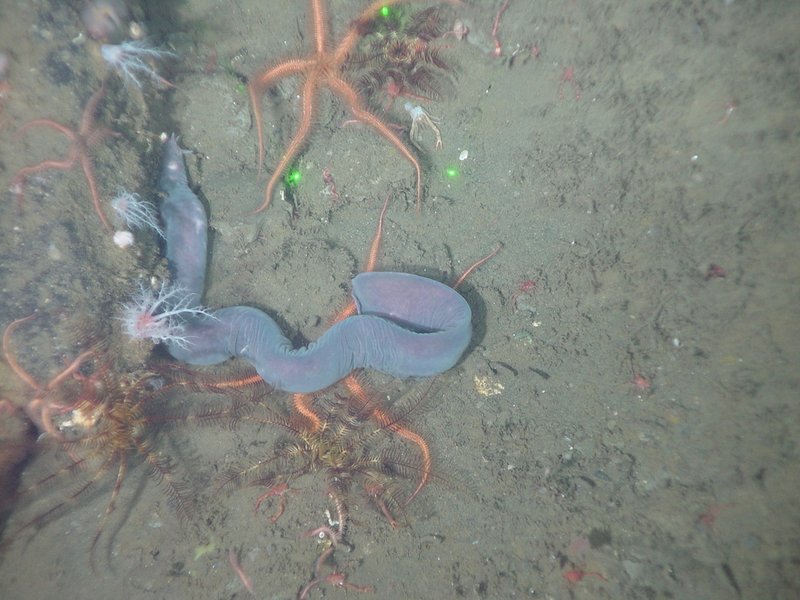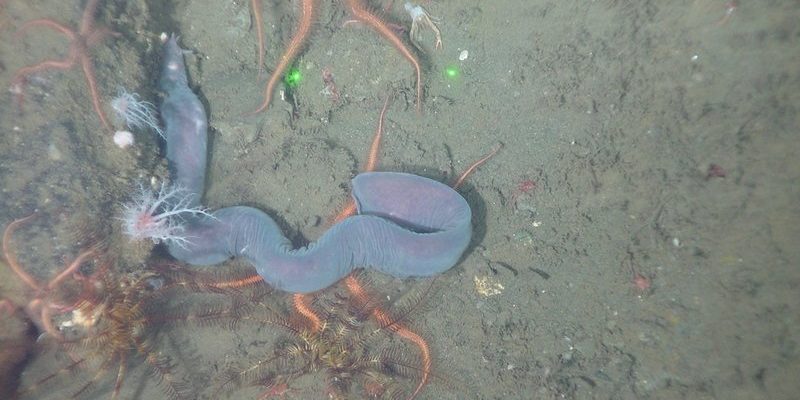
Hagfish are fascinating creatures that inhabit the deep waters of oceans around the world. Often overlooked due to their unusual appearance, these slimy, eel-like animals play an essential role in marine ecosystems. Imagine a creature that can produce copious amounts of slime as a defense mechanism, and you start to appreciate the unique adaptations of the hagfish. While they might not be the prettiest fish in the sea, they are truly remarkable in their own way.
Belonging to the class Myxini, hagfish are considered one of the most primitive forms of vertebrates, dating back over 300 million years. Their simple body structure, which lacks jaws and paired fins, distinguishes them from more familiar fish species. Instead of jaws, they have a unique feeding mechanism that allows them to consume dead or dying marine animals, effectively recycling nutrients back into the ecosystem.
As you dive into the world of hagfish, you’ll discover their intriguing reproductive habits, habitat preferences, and how they contribute to ocean health. This article will guide you through all aspects of hagfish life, and by the end, you’ll have a deeper appreciation for these slippery denizens of the deep.
Physical Characteristics of Hagfish
One of the first things you might notice about hagfish is their unusual appearance. These creatures are elongated and can grow up to 40 inches long, although most average around 16 to 30 inches. Their bodies are soft and flexible, covered in a slimy mucus that helps them navigate through their dark ocean habitats. But don’t let their gooey exterior fool you; hagfish are highly adapted to their environment.
Hagfish lack traditional fish features like scales, fins, and a bony skeleton. Instead, they have a cartilaginous structure that’s more akin to that of sharks. Their skin is a grayish or pink hue, making them blend well with the ocean floor, where they often reside. What really sets them apart are their multiple rows of gill openings—up to 15 on each side—which allow them to extract oxygen from the water efficiently.
Another striking feature of hagfish is their unique mouth. Instead of a jaw, they have a set of four small tentacle-like structures that help them grasp food. These tentacles are lined with sensory organs, allowing them to detect the size and texture of potential meals. They are skilled scavengers, often found feasting on dead fish and other organic matter that settles on the ocean floor.
Habitat and Distribution
Hagfish are primarily found in deep-sea environments, lurking in ocean trenches and continental shelves. They tend to favor cold waters, often dwelling at depths ranging from 300 to 2,000 meters. While you might think of the ocean as an endless expanse, hagfish have their own preferred habitats, where they can thrive and find sustenance.
These creatures have a worldwide distribution, from the North Atlantic to the Pacific Oceans. Surprisingly, hagfish can also thrive in warmer waters, making them quite adaptable. They often burrow into the muddy ocean floor, where they remain hidden from predators while feeding on decaying organic material. Their ability to live in such inhospitable environments speaks to their evolutionary success as scavengers.
Interestingly, hagfish have been spotted near hydrothermal vents and cold seeps, environments filled with unique life forms that depend on chemical energy instead of sunlight. Here, they play a vital role in recycling nutrients, breaking down organic material that could otherwise go to waste in these ecosystems.
Diet and Feeding Habits
Hagfish are scavengers by nature. They primarily feed on dead or dying fish, which they locate using their keen sense of smell. When they detect a potential meal, they use their tentacle-like mouthparts to latch onto the carcass. What happens next is nothing short of fascinating. Hagfish can enter the body of their prey through any openings, often starting with the gills or mouth. Once inside, they feed on the soft tissues.
To aid in their feeding process, hagfish produce an impressive amount of slime. When threatened or feeling alarmed, they can release this mucus, which can overwhelm predators—making escape much easier. The tactic is a brilliant method of self-defense, allowing them to wriggle away while the predator is left confused and frustrated.
This slime isn’t just a defensive mechanism; it also helps hagfish with their feeding. The mucus creates a protective coating, ensuring they don’t get harmed by the decaying flesh of their meals. Over time, these scavengers contribute to the health of ocean ecosystems by recycling nutrients, preventing dead organic material from accumulating on the ocean floor.
Reproductive Behavior
Understanding the reproductive habits of hagfish can be quite challenging, as much of their life cycle remains a mystery. However, what we do know is that hagfish are believed to be external spawners, meaning that females release eggs into the water, where males then fertilize them. Interestingly, some studies suggest that hagfish may be capable of hermaphroditism, allowing them to change sex depending on environmental circumstances and population dynamics.
During mating season, which occurs once a year, hagfish gather in specific regions of the ocean to mate. After fertilization, the eggs remain in the water column for several months, developing into juvenile hagfish. These young ones begin their lives drifting in the open ocean before eventually settling at the ocean floor, where they continue the cycle.
Even if their reproductive strategies are still being studied, hagfish undoubtedly have a unique approach to life and reproduction. Their resilience has allowed them to adapt and thrive despite the challenges of their environment. In this way, hagfish stand as a testament to the ingenuity of nature in ensuring survival.
Importance in Marine Ecosystems
Hagfish play a vital role in marine ecosystems, acting as nature’s recyclers. Their scavenging habits help break down dead organic materials, returning essential nutrients to the ocean ecosystem. Without creatures like hagfish, dead marine life would accumulate on the ocean floor, which could lead to imbalances in the ecosystem.
Furthermore, their unique feeding methods promote biodiversity. By feeding on carrion, hagfish create opportunities for other scavengers and decomposers, ensuring that nutrients are returned to the environment efficiently. This interdependence among species illustrates the intricate web of life that exists in ocean ecosystems.
Hagfish also have a unique adaptation: their slime can serve as a component in various marine food webs. When they release mucus, it can provide a temporary food source for smaller organisms. This shows how interconnected marine life can be, where even the gooey hagfish contribute to a larger ecological picture.
Threats and Conservation
Despite being resilient creatures, hagfish face threats from human activities, primarily due to overfishing and habitat destruction. While they are relatively abundant in some areas, their populations are declining in others, primarily due to commercial fishing practices targeting other species. This can indirectly impact hagfish populations, as their natural habitats become compromised.
Conservation efforts for hagfish are not as prominent as they are for other marine species, but increasing awareness of their ecological importance is crucial. Sustainable fishing practices and habitat preservation must be prioritized to protect these unique creatures and their roles in marine ecosystems.
Research into hagfish is also important. As we learn more about their biology, ecology, and behavior, we can better understand how to protect their populations and the habitats they depend upon. Supporting marine conservation initiatives can have far-reaching effects, not just for hagfish but for the entire ocean ecosystem.
Interesting Facts About Hagfish
| Size: | 16 to 40 inches long |
| Habitat: | Deep-sea environments, continental shelves |
| Diet: | Scavengers feeding on dead or dying marine animals |
| Lifespan: | Up to 20 years |
| Unique Defense: | Produces copious slime for protection |
| Reproduction: | External fertilization; potential hermaphrodites |
| Color: | Grayish to pink |
FAQ
What is a hagfish’s primary habitat?
A hagfish typically resides in deep-sea environments, often found on the ocean floor at depths between 300 and 2,000 meters. They prefer cooler waters and can be spotted worldwide, from the North Atlantic to the Pacific Oceans.
Are hagfish dangerous to humans?
No, hagfish are not dangerous to humans. They are scavengers that primarily feed on dead fish and organic material. Their primary defense mechanism is the production of slime, which can be overwhelming but poses no threat to humans.
How do hagfish produce slime?
Hagfish have specialized glands in their skin that produce a thick, mucous secretion. This slime is released in large quantities when the hagfish feels threatened, creating a slippery barrier that confuses predators, allowing them to escape.
How do hagfish reproduce?
Hagfish are believed to practice external fertilization, where females release eggs into the water and males fertilize them. There is also evidence suggesting that some hagfish can change sex based on environmental factors.
What do hagfish eat?
As scavengers, hagfish primarily feed on dead or dying marine animals. They locate these meals using their excellent sense of smell and can consume their food by infiltrating the carcass through openings like the gills or mouth.
How long can hagfish live?
Hagfish can live for up to 20 years in the wild, though factors such as predation and habitat conditions can affect their lifespan. Their resilience and adaptability contribute to their survival in challenging environments.
Are hagfish considered fish?
While hagfish are often referred to as fish, they belong to the class Myxini, which differs from traditional fish. They lack jaws and paired fins, making them more primitive compared to bony or cartilaginous fish.
What role do hagfish play in the ecosystem?
Hagfish serve as important scavengers, helping to recycle nutrients by consuming dead or dying marine life. Their feeding habits promote biodiversity and contribute to the overall health of marine ecosystems.

